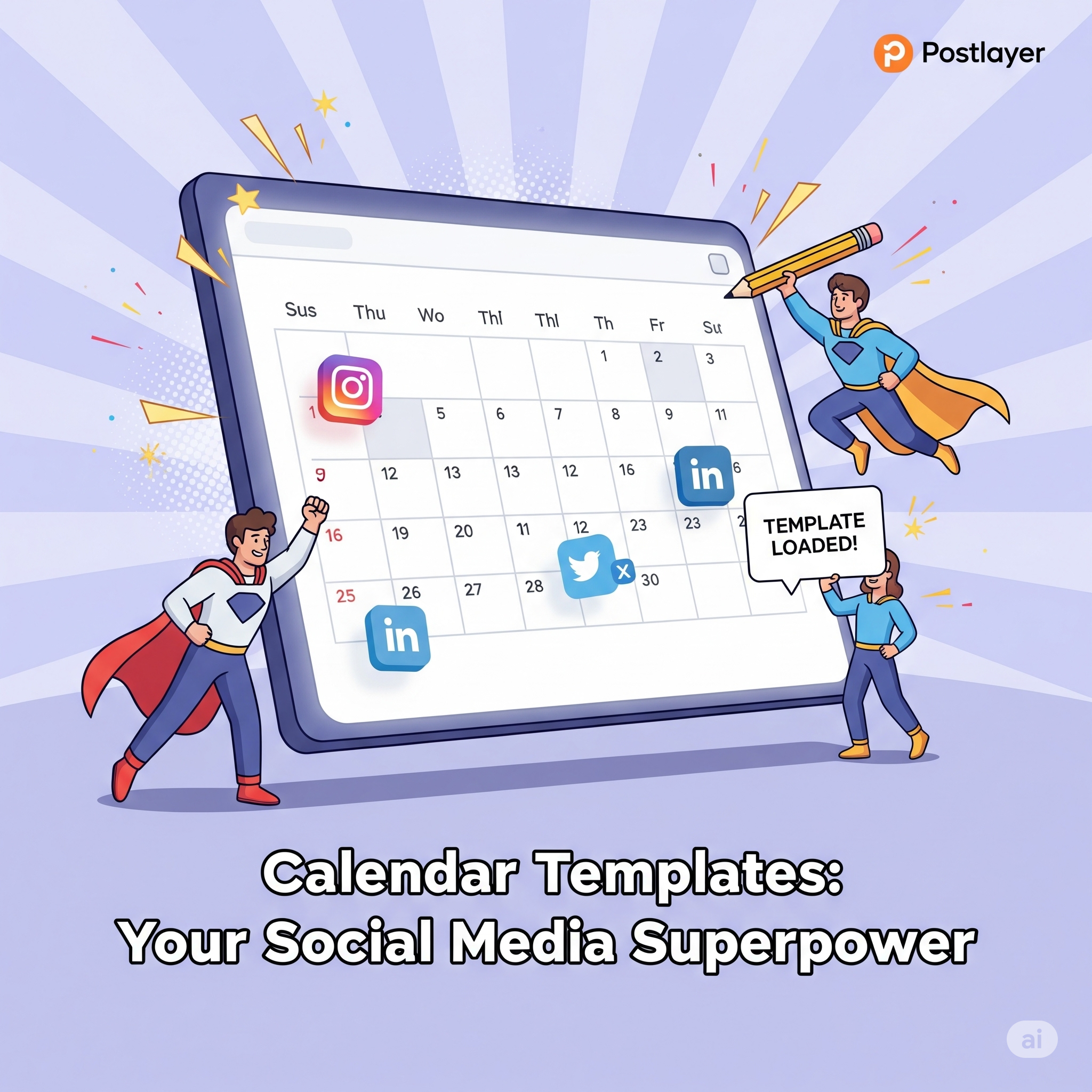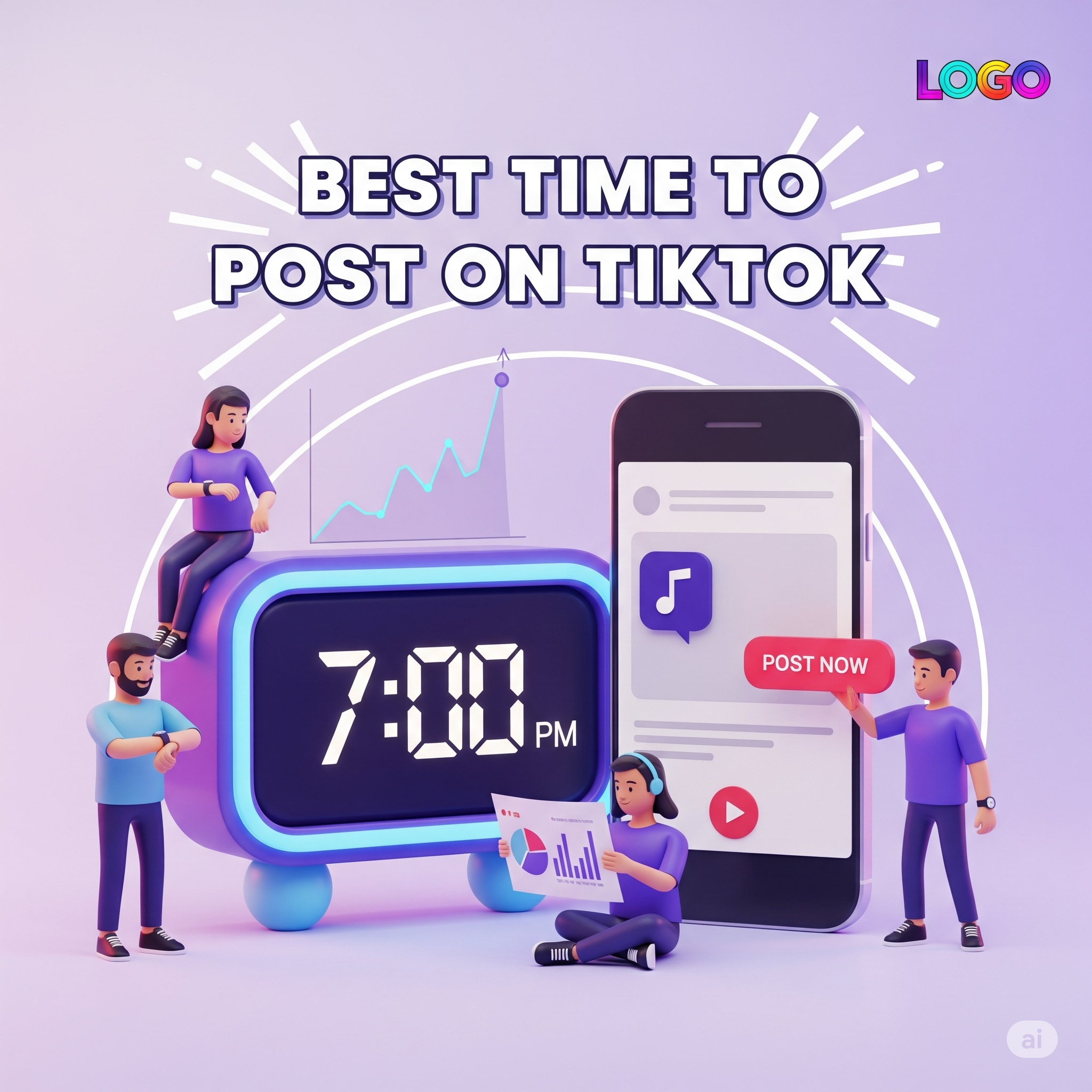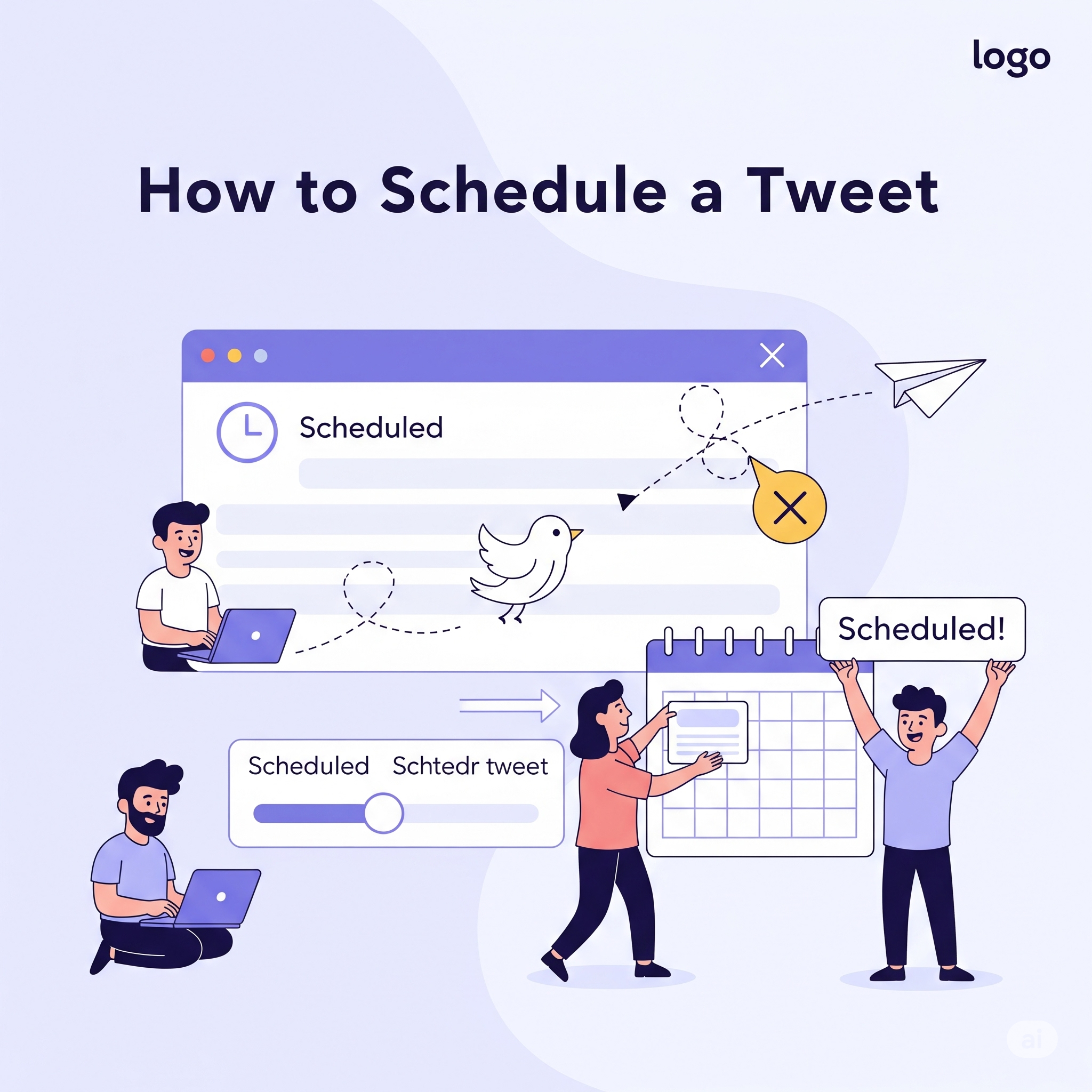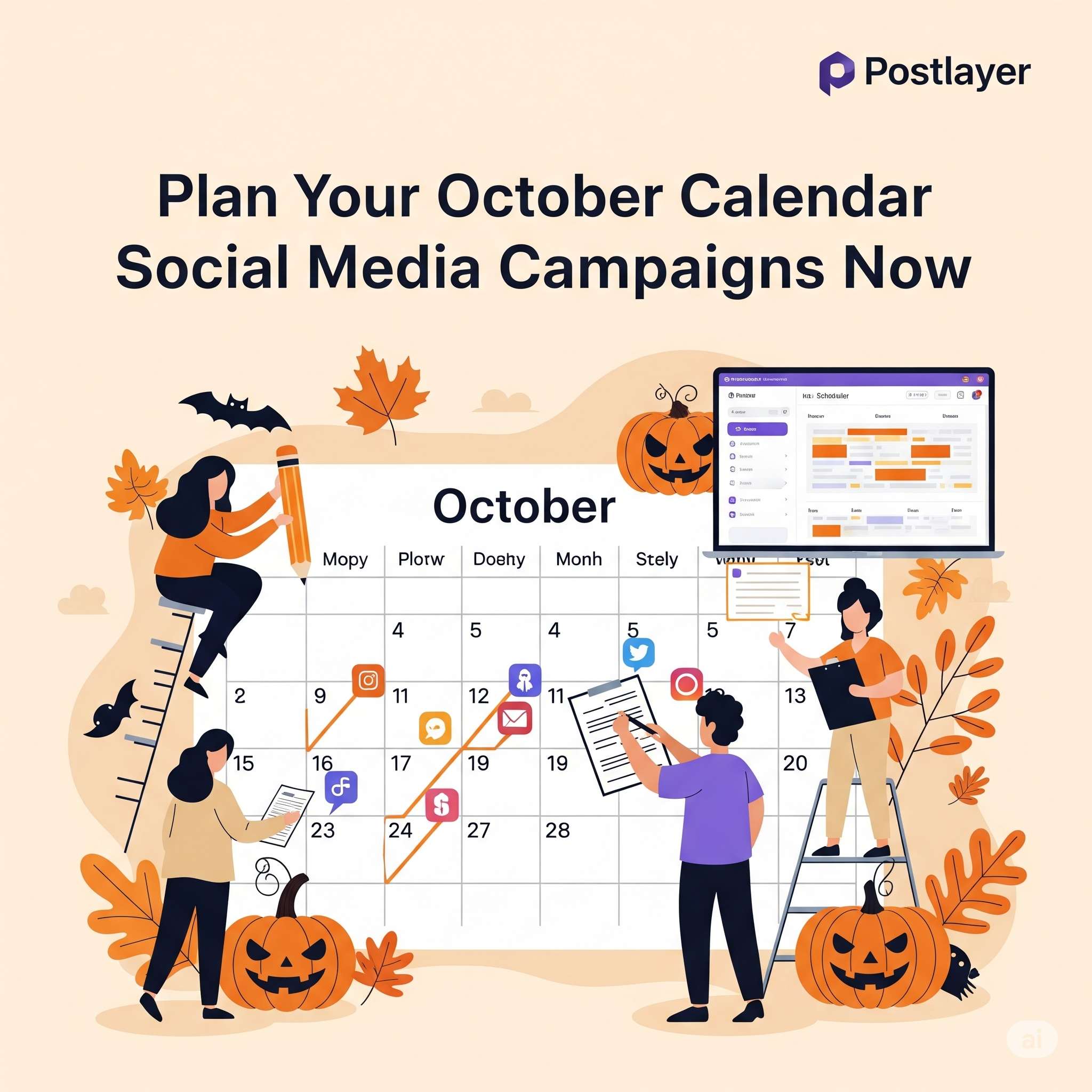Let’s be truthful. For individuals managing social media, whether you’re a solopreneur focused on brand development, a content creator seeking steady interaction, or a social media manager overseeing various clients, a common nightmare persists. It goes like this: You wake up, browse your feed, and suddenly notice you haven't shared anything in two days. Or even worse, you conceive an amazing idea for a campaign, but it becomes buried among a multitude of sticky notes and disorganized thoughts. The considerable cognitive burden of what to share, when to share it, and where to share it can seem like a full-time job on its own. This makes me incredibly frustrated, as it's a totally preventable user frustration. I have devoted eight years to the B2B SaaS industry, focusing on user experience and the scalability of features, and I can say that the issue isn’t due to a shortage of creativity or even time. Frequently, an absence of structure, a gap in the user experience, results in frustration, exhaustion, and, in the end, lost chances. We must achieve feature equivalence with the top in the field, but with our distinct approach – which always focuses on making the complex simpler. Now, let's discuss the unassuming, but highly effective, calendar template. Consider your existing social media process. Is it a smoothly running operation, or does it resemble a disorganized mix of spontaneous thoughts and rushed updates? For numerous individuals, it's the latter. I've witnessed it numerous times. Product teams, content creators, and agencies alike face the same core challenges related to planning for social media. A typical sign of a flawed social media strategy is posting reactively. You share content when it comes to mind, when creativity hits (or fails), or when a popular subject compels you. This method is not only ineffective, but it greatly restricts your potential influence and reach. You're always trying to catch up, never genuinely staying ahead of the curve. It's akin to traversing a thick woods without a guide; you may ultimately arrive at a destination, but there will be considerable wasted effort and mistakes along the way. In truth, while examining user behavior trends at a former company, we discovered that individuals who didn't consistently organize their content experienced engagement declines of up to 40% in contrast to those who adhered to a routine. (which honestly caught me off guard – I anticipated it would be significant, but not that significant). This metric surprised me as it showcased the significant effect a simple, steady plan can create.
I've spent eight years in the B2B SaaS world, obsessing over user experience and feature scalability, and I can tell you, the problem isn't a lack of creativity or even a lack of time. It's often a lack of structure, a missing piece in the user journey that leads to frustration, burnout, and ultimately, missed opportunities. We need to ensure feature parity with the best in the business, but with our unique twist – and that twist is always about simplifying the complex. So, let's talk about the humble, yet incredibly powerful, calendar template.
The Chaos Before the Calm: Why Your Current System (or Lack Thereof) is Failing You
Think about your current social media workflow. Is it a well-oiled machine, or more like a chaotic jumble of last-minute ideas and hurried posts? For many, it's the latter. I've seen it countless times. Product teams, content creators, even agencies – they all struggle with the same fundamental issues when it comes to social media planning.
The Problem: Reactive Posting and Missed Opportunities
The most common symptom of a broken social media strategy is reactive posting. You post when you remember, when inspiration strikes (or doesn't), or when a trending topic forces your hand. This approach is not only inefficient, but it severely limits your potential reach and impact. You're constantly playing catch-up, never truly ahead of the curve. It's like trying to navigate a dense forest without a map; you might eventually get somewhere, but it's gonna be a lot of wasted effort and wrong turns.
Honestly, when we analyzed user behavior patterns at a previous company, we found that users who didn't plan their content consistently saw engagement drops of up to 40% compared to those who stuck to a schedule. (which, frankly, surprised me – I expected it to be high, but not that high). This metric caught me off guard because it highlighted just how much impact a simple, consistent plan can have.
- Inconsistent Brand Voice Without a plan, your messages can become disjointed, leading to a confusing brand identity. One day you're witty, the next you're overly serious.
- Content Gaps and Repetition You either run out of ideas and have nothing to post, or you accidentally repeat content because you can't remember what you've already shared.
- Burnout and Stress The constant pressure of "what to post next?" is mentally exhausting and unsustainable. I'll be honest, I struggled with this too early in my career, trying to manage multiple projects without a clear content strategy.
- Missed Trends and Events Important holidays, trending hashtags, industry events – without a calendar, these opportunities for timely, relevant content just fly by.
The Deeper Pain: Lack of Strategic Alignment
Beyond the day-to-day tactical failures, the real pain point is a lack of strategic alignment. How does this solve the user's problem of growing their business? If your social media isn't connected to your broader marketing goals – lead generation, brand awareness, customer retention – then it's just noise. A calendar template isn't just about scheduling posts; it's about aligning every piece of content with your overarching business objectives. It’s about building a user journey that’s seamless from discovery to conversion.
Just this Tuesday, I was sketching out UI flows for a new feature, and the first thing I drew was the user's journey before they even hit our platform. What are their pain points? How do we alleviate them? For social media, that means understanding that the user isn't just posting for fun; they're posting for a purpose. And that purpose needs a roadmap. Our roadmap prioritizes solutions that make that connection explicit.
The Dawn of Order: How a Social Media Calendar Template Transforms Your Workflow
OK, this next part is seriously cool. This is where the magic of a well-designed social media calendar template comes into play. It's not just a fancy spreadsheet; it's a strategic weapon that brings order to chaos, transforming your reactive posting into a proactive, powerful content engine.
Problem Solved: Proactive Planning and Consistency
A social media calendar template forces you to plan ahead. Instead of scrambling for ideas, you're brainstorming content weeks or even months in advance. This allows for:
- Consistent Content Flow: You always know what's coming next, ensuring a steady stream of valuable content for your audience.
- Optimized Posting Times: You can strategically schedule posts for peak engagement times on each platform, maximizing your reach.
- Thematic Planning: Group similar content together, create series, and build anticipation for launches or special events. This enhances the core value proposition of your content.
- Reduced Stress: No more last-minute panic. You're prepared, organized, and in control.
I remember one time, early in my product management career, we were launching a major new feature. Our marketing team was struggling to coordinate content across different channels. I suggested they map out their entire launch campaign on a shared calendar, detailing every tweet, Instagram story, and LinkedIn post. The difference was night and day. It streamlined their efforts and led to a much smoother, more impactful launch. That’s how you build a seamless user journey for your audience.
Expected Impact: Strategic Alignment and Measurable Results
Beyond mere consistency, a calendar template elevates your social media to a strategic level. It helps answer the critical question: " How does this solve the user's problem?"
- Clear Objectives Each piece of content can be tied back to a specific marketing goal, whether it's brand awareness, lead generation, or driving traffic to your website.
- Campaign Cohesion Plan integrated campaigns across multiple platforms, ensuring a unified message and maximizing impact.
- Performance Tracking With a plan in place, you can easily track which types of content perform best and adjust your strategy accordingly. This data-driven approach is crucial for continuous improvement.
- Time Savings Automating your planning frees up immense amounts of time that you can then dedicate to content creation, engagement, or other business activities.
The user journey should be seamless, and that applies to your internal processes as much as it does to your external-facing content. A good calendar template is the backbone of that internal seamlessness.
Beyond the Basics: What Makes a truly Effective Calendar Template?
Now, you might be thinking, " Ok, I get it, a calendar template is good. But Canva and Microsoft have tons of them. What's the secret sauce?" This is where most people screw up: they grab a generic template and think they're done. A truly effective social media calendar template isn't just a grid of dates; it's a dynamic tool tailored to your specific needs and integrated into your broader workflow.

Essential Elements of a Power-Packed Template
When I sketch UI flows for a new feature, I always start with the core user needs. What are the absolute must-haves for our users? For a social media calendar, these are non-negotiable:
- Date and Time Obvious, but critical. Include specific dates and planned posting times.
- Platform Clearly indicate which platforms each piece of content will go on (e.g., Instagram, TikTok, LinkedIn, X, Facebook, YouTube).
- Content Type Is it a Reel, a carousel, a thread, a story, a long-form video, a simple image post? Knowing this helps with content planning and asset creation.
- Topic/Theme A brief description of the content's subject matter.
- Key Message/Call to Action (CTA) What do you want your audience to do after seeing this post? This enhances the core value proposition.
- Status Is it " Draft," " Ready for Review," " Scheduled," " Posted," " Archived"? This is crucial for team collaboration and workflow management.
- Visuals/Assets A placeholder or link to the accompanying image, video, or graphic.
- Performance Metrics (Post-Publish) Once posted, a section to track key metrics like reach, engagement, clicks, or conversions. This is how you learn and iterate.
We need to ensure feature parity, but with our unique twist, and that twist is always about providing more actionable insights and streamlining the user's ability to act on those insights.
Advanced Considerations for Maximum Impact
But here's where it gets interesting, especially for those of us who think about user experience deeply. To truly dominate social media, your calendar template needs to go beyond the basics.
- Content Pillars/Categories What are the overarching themes you consistently post about? (e.g., Educational, Behind-the-Scenes, Promotional, Community Engagement). This helps maintain brand consistency and ensures a balanced content mix.
- Evergreen vs. Timely Content Differentiate between content that can be reused or repurposed at any time (evergreen) and content tied to specific events or trends (timely).
- Repurposing Notes How can this piece of content be adapted for other platforms? A TikTok video might become an Instagram Reel and a YouTube Short. This saves immense time.
- A/B Testing Notes If you're testing different headlines, CTAs, or visuals, note it here to track results effectively.
- Team Member Assignee For teams, who is responsible for creating, reviewing, and publishing each piece of content?
- Budget Allocation If you're running paid promotions, a column for budget per post can be invaluable.
The user journey should be seamless, and that includes the journey of your content from idea to published post. This level of detail in a template helps achieve that.
From Template to Triumph: Implementing Your Social Media Calendar
Having the perfect template is only half the battle. The other half is actually using it effectively. This is where the product mindset kicks in: it’s not just about a tool, it’s about the process and the habits you build around it.
Choosing the Right Tool for Your Template
While you can use a simple spreadsheet (Google Sheets, Excel), for serious social media management, especially for individual content creators and small to medium-sized businesses, you'll want something more robust.
This is where platforms like Postlayer come in. They offer dedicated social media calendar features that often include:
- Drag-and-Drop Interface: Visually plan and rearrange content with ease.
- Integrated Scheduling: Schedule posts directly from the calendar to multiple platforms.
- Collaboration Tools: Share calendars with teams, assign tasks, and manage approvals.
- Asset Management: Store and access all your visuals and videos directly within the platform.
- Analytics Integration: See performance data for your scheduled posts right within your calendar view.
When we design features, we always ask, " How does this make the user's life easier?" The answer almost always involves consolidating workflows and reducing context switching. A unified dashboard is key.
Best Practices for Calendar Management
So, you've got your template, you've chosen your tool. Now, how do you make it a habit?
- Dedicate Planning Time Set aside a specific block of time each week or month for content planning. Treat it as a non-negotiable meeting with yourself (or your team).
- Brainstorm in Batches Instead of coming up with ideas one by one, brainstorm a month's worth of content ideas in one sitting.
- Leverage AI and Automation Use tools that offer AI-powered content assistance to generate ideas or draft captions, saving you valuable time. Automate scheduling as much as possible.
- Review and Adapt Regularly review your calendar's effectiveness. What worked? What didn't? Adjust your strategy based on performance data. The user journey should be constantly optimized.
- Stay Flexible While planning is crucial, be prepared to adjust your calendar for breaking news, trending topics, or unexpected events. A template is a guide, not a rigid prison.
Our roadmap prioritizes features that empower users to be both efficient and agile. That's the sweet spot for social media success.
The Future of Content Planning: Beyond the Spreadsheet
The landscape of social media is constantly evolving. What was cutting-edge even a year ago might feel clunky today. As of 2025, the trend is clear: integration, automation, and intelligent assistance. The future of content planning isn't just about a static calendar template; it's about dynamic, AI-powered systems that anticipate your needs and streamline your entire workflow.
Competitors' product features often highlight what's possible, but our differentiation lies in making that power accessible and affordable, without sacrificing depth. For example, the ability to create multi-platform schedules, manage carousel posts, threads for X (Twitter), and even schedule stories – all from one place – isn't just a convenience; it's a strategic advantage. It enhances the core value proposition of your social media efforts.
With June almost over, I'm thinking about Q3 planning. The same principles apply whether you're planning a product roadmap or a social media content calendar: identify the problem, propose a solution, and define the expected impact. For social media, the problem is scattered, inefficient content creation; the solution is a powerful, integrated calendar; and the impact is consistent growth and engagement.
The user journey should be seamless, from the initial spark of an idea to the final analysis of a campaign's performance. A robust social media calendar template, integrated into a comprehensive management platform, is the key to unlocking that seamlessness. It's the difference between merely existing online and truly dominating your social channels.
Elevate your social media strategy with Postlayer and experience unparalleled efficiency. Consolidate your content creation, scheduling, and performance tracking across all major platforms from one intuitive dashboard, reclaiming valuable time each week. Discover how our comprehensive suite of tools, from AI-powered content assistance to an integrated video studio, empowers you to amplify your online presence and achieve consistent engagement. Take control of your digital narrative and transform your social media workflow. Start dominating your social channels with Postlayer today. Learn more



